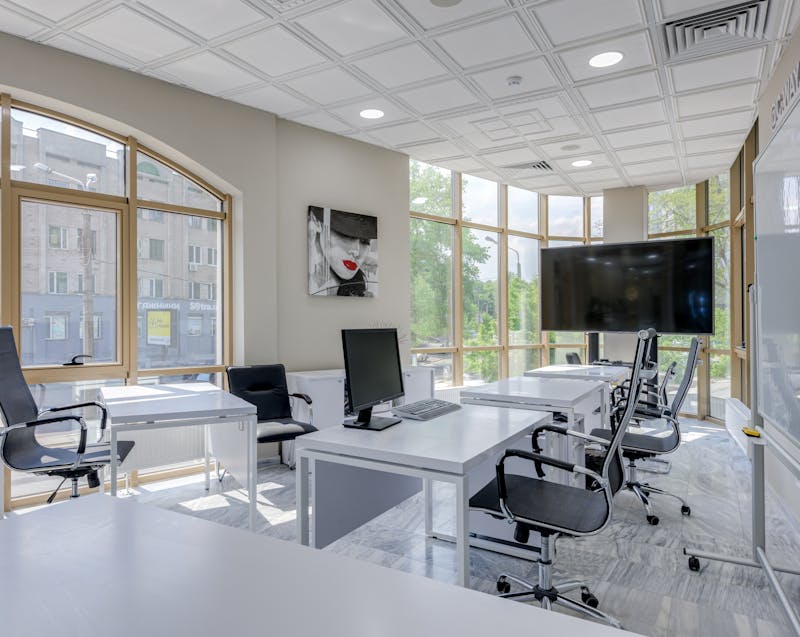- Identifying the right location for an on-site store or office is essential, considering factors such as traffic and visibility, proximity, competition, and cost.
- Creating a budget helps to manage the costs associated with constructing a new store or office and keep the project within its original timeline and budget.
- Professional services can create functional spaces tailored to the company’s needs while keeping safety regulations in check.
- Careful planning and preparation are needed to successfully transition from remote operations to an on-site business establishment that appeals to customers.
Remote businesses have become popular in recent years due to the ease of setting up an online store or virtual office. However, as these businesses become increasingly successful, they often move on-site for various reasons.
One of the primary reasons that remote businesses choose to move on-site is because it boosts their visibility. Moving from an online presence to a physical storefront allows customers easy access and makes building trust with potential customers easier. According to a digital marketing firm’s Social Media Link survey, 81% of customers say that seeing a business’s physical address increases their trust. In addition, more than half of the respondents said that being able to visit a store or office in person gave them additional confidence when evaluating whether or not they wanted to do business with the company.
If you are among the many businesses that have decided to move on-site, it is essential to take the necessary steps to ensure a successful transition. Here are some tips for expanding a remote business on-site:
Identify the Location

The location of a business establishment has a significant impact on its success. Finding the perfect spot for an on-site store or office requires careful consideration of various factors. Here are some crucial points to consider when selecting a location:
Traffic and Visibility
When choosing a location for your business, you must ensure it is easily accessible and visible to potential customers. Look for areas with high foot traffic, such as busy shopping centers or downtown locations. This will increase the chances of people seeing your store and learning more about your business. Be sure to check local laws and regulations before setting up shop in any area, as some places may require specific permits or licenses before you can open up shop.
Proximity
In addition to looking at visibility, you must consider proximity when selecting a location for your business. Ensure the area is close enough for customers to easily access your store or office from their homes or workplaces. Consider factors like public transportation options, nearby restaurants, and other amenities that may attract customers to your business’s location.
Competition
Competition is another critical factor that must be considered when choosing a location for your business. Research other stores or offices in the area to get an idea of how much competition you will face and what kind of competitive advantage you can offer potential customers over them. Take note of any complaints or feedback that might be available online about rival businesses in the area, so you can learn what not to do when setting up shop in the same vicinity.
Cost
Finally, cost must be considered when selecting a location for your business establishment. Ensure that the rent is within your budget and that no surprises are hidden in the lease agreement. If possible, negotiate with landlords for better rates or longer leases to secure lower overhead costs in the long run and focus more on expanding and growing your business instead of worrying about finances all the time.
Create a Budget
Creating a budget for office construction is essential for expanding on-site businesses. Without a clear financial plan, managing the costs associated with constructing a new store or office can be difficult. A budget helps to ensure that the process goes as smoothly as possible and helps to keep the project within its original timeline and budget.
When creating a budget for office construction, there are several factors to consider, such as materials, labor, equipment, permits, and other fees. Viewing all of these elements is essential to estimate the total cost accurately. Additionally, having a detailed list of estimated costs can help businesses negotiate with contractors or suppliers for better deals.
A detailed budget also helps businesses stay organized and focused throughout the construction process. By tracking expenses regularly, business owners can identify areas where they may need additional resources or may be able to cut costs without sacrificing quality or service. This level of detail also makes it easier for companies to monitor progress and adjust their budgets accordingly if necessary.
Get Professional Services

Getting professional services for office construction is essential for businesses that want to expand their remote operations on-site. Commercial architectural designers are experienced professionals who can help create a space that meets a business’s specific needs while considering local building codes and regulations.
The overall design of an office, from layout to aesthetics, can have a massive impact on the success of a business. Commercial designers create functional spaces tailored to the company’s needs while still being aesthetically pleasing and meeting local regulatory standards. For instance, they can ensure that safety regulations provide adequate lighting and air conditioning and suggest necessary modifications. In addition, they can advise businesses on how best to use available space and offer options for interior design elements like furniture or flooring.
Another professional service that will help businesses succeed in expanding their remote operations is legal counsel. Hiring a lawyer experienced in business law can help ensure that all necessary permits and licenses are obtained before starting construction. The attorney can advise on contracts, zoning laws, and other compliance forms. This will allow businesses to avoid costly mistakes or misunderstandings that could delay the process or even lead to legal issues.
Final Thoughts
Expanding a remote business on-site can be an exciting and rewarding experience. However, there are several steps to take before it can be successful. By remembering the above tips, businesses can ensure a smooth transition to their new physical space. With careful planning and preparation, companies will create a functional and attractive space that appeals to customers and encourages them to return for more.





